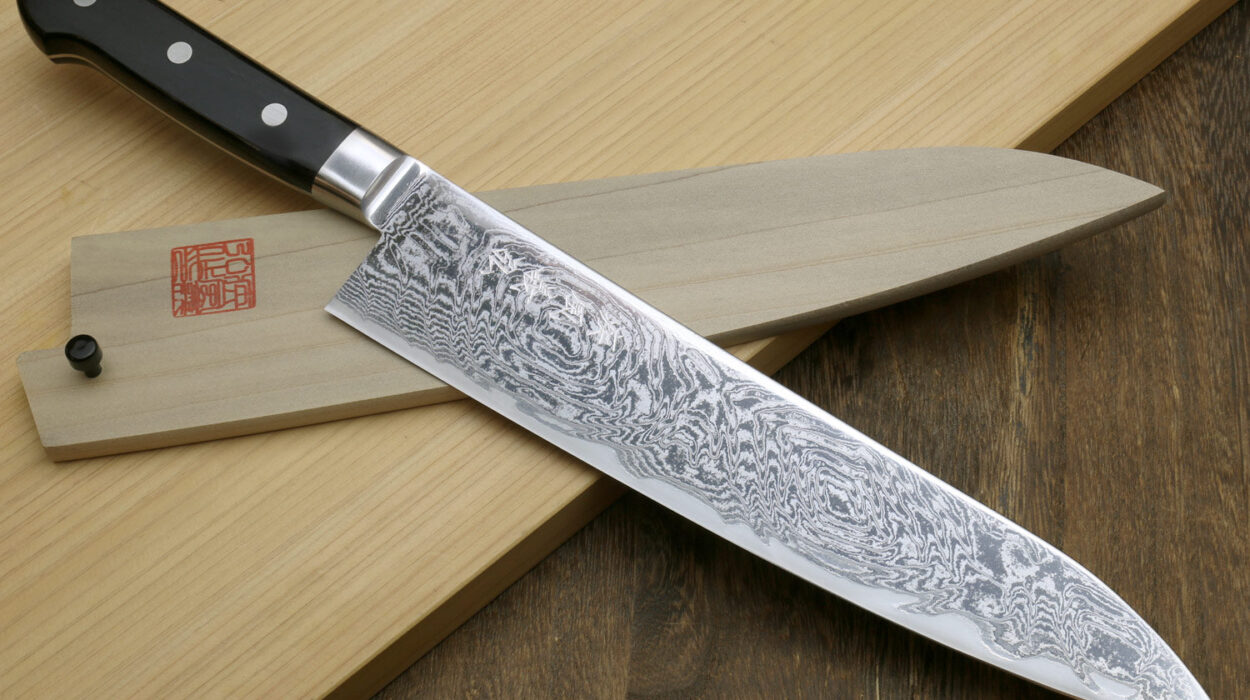The fascinating allure of Damascus blade patterns is often admired by both culinary enthusiasts and professional chefs. These intricate designs are not just a visual treat but also enhance the performance of kitchen knives, offering an optimal balance between beauty and function.

What are Damascus Blade Patterns?
Damascus blade patterns originate from a traditional process of blade making that involves the careful layering and forging of different steel types. The result is a blade with stunning visual patterns, often resembling the flowing lines of water.
The History Behind Damascus Steel
The term ‘Damascus‘ traces back to the city of Damascus in Syria, which was initially linked to this renowned steel. These blades were highly coveted during medieval times for their distinctive patterns and superior strength. For more insights on the historical aspect, explore Damascus Steel Facts.
The Making of Damascus Steel and its Patterns
Creating the Signature Patterns
Creating a Damascus blade involves repeatedly forging, folding, and heat-treating the steel. This meticulous process allows for the unique wave-like patterns to emerge, contributing to the steel’s strength and aesthetic appeal.
Modern Techniques in Pattern Making
While traditional methods are still cherished, modern techniques have introduced precision and consistency in creating Damascus patterns. Expert craftsmen use advanced metallurgy and computer-aided designs to reproduce historical patterns and create new ones.
Types of Damascus Blade Patterns
1. Ladder Pattern
The Ladder pattern is renowned for its evenly spaced, linear marks that mimic the rungs of a ladder, adding grip and textural detail to kitchen knives.
2. Raindrop Pattern
The Raindrop pattern is admired for circular impressions that simulate raindrops on a surface, lending a beautiful aesthetic to the knife.
3. Feather Pattern
As the name suggests, the Feather pattern resembles delicate plumage and is synonymous with elegance and artistry in knife designs.
The Role of Damascus Patterns in Kitchenware
Enhanced Cutting Performance
Beyond visual appeal, Damascus patterns contribute to the blade’s cutting efficiency, allowing professional chefs to perform precise cuts effortlessly. To achieve maximum cooking precision, also check how to cook different meats using pressure cookers, such as cook stew meat.
Durability and Strength
The forging process enhances the blade’s toughness, ensuring it withstands the rigors of daily kitchen use without losing sharpness.
Maintaining Your Damascus Knife
Proper Care Techniques
To preserve the beauty and functionality of Damascus knives, regular maintenance is crucial. This includes hand washing, regular honing, and proper storage.
Tips for Sharpening
Sharpening should be done using appropriate whetstones to maintain the blade’s edge without damaging the patterns.

Frequently Asked Questions
What makes Damascus patterns so unique?
The uniqueness lies in the intricate designs achieved through a complex forging process coupled with the blade’s performance advantages.
Can Damascus knives rust?
While Damascus steel is resistant to rust, proper care must be taken to prevent corrosion, such as keeping them dry and clean.
Are all Damascus patterns original?
While many patterns are traditional, modern techniques have introduced new designs, each with its own charm and functionality. To learn more about the authenticity of these patterns, check the Serious Eats guide on Damascus steel.
This article contains affiliate links. We may earn a commission at no extra cost to you.


